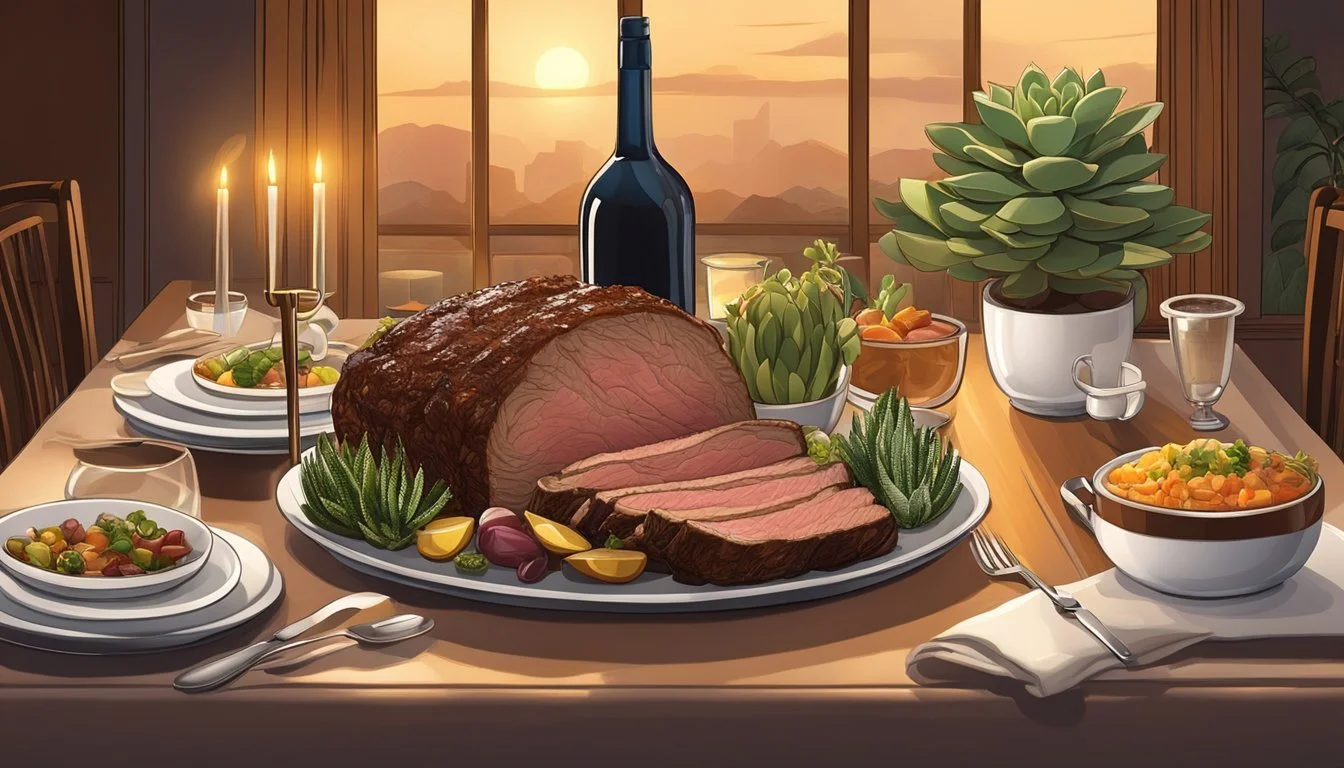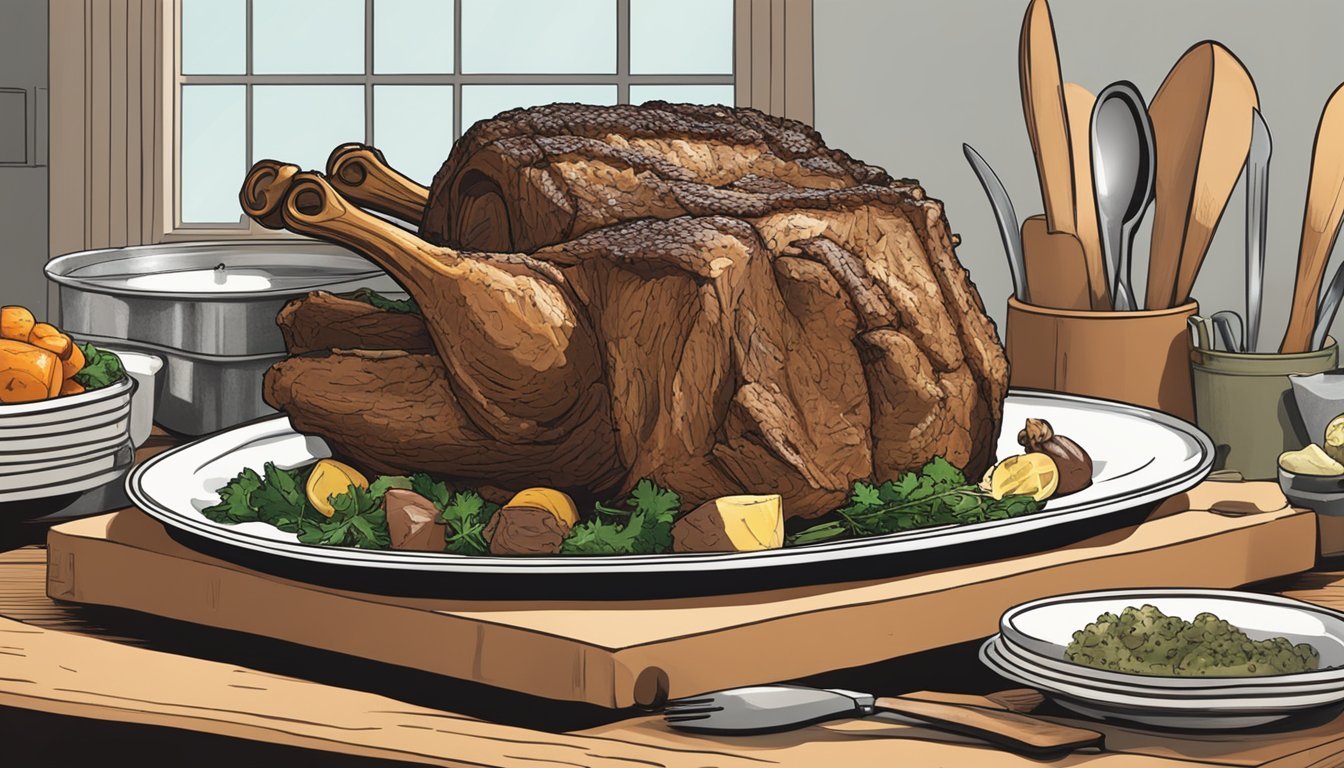How Do You Eat a Rib Roast
Expert Guidelines for Savory Enjoyment
A rib roast, particularly the prime rib roast, stands as a centerpiece of celebratory meals and gatherings. Revered for its succulent texture and rich flavor, this cut of beef demands attention both in preparation and dining. The prime rib includes some of the most tender and flavorful portions of beef, making it a sought-after dish for those looking to impress their guests.
Eating a rib roast is an experience that combines tradition with personal preference. Diners can enjoy this exquisite cut in various ways, from rare to well done, depending on how it's been cooked. Every slice is typically marked by a perfect balance of fat and meat, which contributes to the rich taste and tender consistency. The art of eating a rib roast extends beyond simple consumption; it encompasses an appreciation for the culinary practices that bring out the best in this exceptional cut of meat.
Essential Prep Before Cooking
Proper preparation is crucial for enhancing flavor and ensuring the perfect cook of a rib roast. The key aspects include selecting a quality cut, seasoning the meat appropriately, and setting the oven to the correct starting temperature.
Choosing the Right Cut
When selecting a rib roast, look for even marbling throughout the meat, as this fat distribution leads to better flavor and tenderness. The size of the roast should align with the number of guests, generally accounting for about 1/2 pound per person. It's worth investing in a meat thermometer to monitor the internal temperature during cooking.
Preparing the Rib Roast
It is recommended to bring the rib roast to room temperature before cooking to ensure even roasting. Season the roast generously on all sides with coarse kitchen salt and black pepper. For added flavor, a mixture of minced garlic, olive oil, or other preferred seasonings can be applied. Evenly rub the seasoning blend to coat the surface area of the roast.
Seasoning Blend Example:
4 cloves of minced garlic
2 tablespoons of olive oil
1 tablespoon of coarse salt
1 teaspoon of freshly ground black pepper
Preheating the Oven
Before cooking the rib roast, preheat the oven to a high temperature, commonly 500 degrees Fahrenheit. This creates a searing effect on the meat's exterior, locking in juices. After a specific initial roasting period, some recipes advise lowering the oven temperature or turning it off to continue the cooking process slowly.
Roasting the Rib Roast
Roasting a rib roast, commonly referred to as prime rib, is a culinary process that involves precise oven temperature control and timing to achieve the desired level of doneness. Through the subsections below, the key stages of roasting will be described, including how to maintain the right temperature, check the roast for doneness, and what to anticipate throughout the roasting process.
The Roasting Process
To start roasting a rib roast, whether bone-in or boneless, it is crucial to have the beef at room temperature. This ensures even cooking. The roast should be placed on a wire rack within a roasting pan, fat cap side up. Beginning with a high-heat phase to create a crust before transitioning to a lower temperature, allows for even cooking and a juicy interior. Some methods use a reverse sequence, starting at a lower temperature to cook the roast gently, then increasing the heat at the end for browning.
Managing Oven Temperature
The ideal approach involves starting with an oven preheated to a high temperature, around 375-450 degrees Fahrenheit, for a short period to brown the roast's exterior. The roast should then be cooked at a lower temperature ranging from 325 to 350 degrees Fahrenheit, depending on the desired level of doneness. For a roast that is medium rare to medium, a common guideline is to aim for an internal temperature of 135-145 degrees Fahrenheit.
Checking for Doneness
Utilizing either an instant-read thermometer or a probe thermometer is the most accurate way to ensure the roast reaches the target temperature. Insert the thermometer into the thickest part of the roast, avoiding fat and bone, for an accurate reading. It’s important to remove the roast from the oven when it’s 5-10 degrees below the target temperature, as it will continue to cook while resting. The roast should rest, covered loosely with foil, for 15 to 30 minutes to allow the juices to redistribute evenly before carving.
Medium-Rare: 135°F (resting will carry over to 145°F)
Medium: 145°F (resting will carry over to 155°F)
Medium-Well: 150°F (resting will carry over to 160°F)
Well-Done: 160°F (resting will carry over to 170°F)
Following these guidelines will aid in producing a rib roast with the preferred level of doneness.
Resting and Serving the Roast
After the rib roast has completed its cooking time in the oven, the next crucial steps are to let it rest properly, skillfully carve it for presentation, and pair it with appropriate side dishes to enhance the overall meal.
Resting Time
Letting the roast rest is essential for a juicy and tender result. Once removed from the oven, the meat should be transferred to a cutting board and loosely covered with foil. It's recommended that the roast rests for at least 20 to 30 minutes before carving. This relaxation period allows the juices to redistribute throughout the meat, ensuring that each slice is succulent.
Carving and Presentation
Carving the roast correctly contributes greatly to the experience of the meal. One should employ a sharp carving knife, cutting the meat across the grain into thick or thin slices according to preference. The initial cut should be made along the rib bones to separate them from the meat. The individual slices should then be arranged on a platter, displaying the perfectly cooked interior.
Side Dish Pairings
The choice of side dishes can complement the flavors of the rib roast. Classic sides for a rib roast include:
Yorkshire pudding
Roasted vegetables (What wine goes well with roasted vegetables?)
Creamy mashed potatoes
Steamed green beans
Horseradish sauce
Select sides that balance the richness of the meat and add a variety of textures and flavors to the meal.
Advanced Techniques and Tips
To achieve a rib roast that delights the palate, one should master the art of searing, use aromatic herbs and marinades for depth of flavor, and apply final touches that enhance the dining experience.
Searing for a Flavorful Exterior
Searing the rib roast is crucial for developing a savory crust. One should begin by heating the oven to a high temperature (around 500°F or 260°C) and cook the rib roast for a short duration, typically 15-20 minutes. This process creates a flavorful crust by caramelizing the outer layer of the meat. After the initial sear, one must then lower the oven temperature to continue cooking the meat in a low and slow manner, ensuring even doneness.
Herbs and Marinades
The use of herbs like fresh rosemary and thyme alongside spices such as cayenne pepper and black pepper can dramatically elevate the taste of a rib roast. Create a marinade or rub by combining minced fresh herbs, garlic powder, a touch of dried herbs for concentrated flavor, and a generous seasoning of salt and pepper. Apply this to the fatty side of the roast before cooking to infuse the meat with these aromatic flavors during the roasting process.
Final Touches for the Perfect Roast
Once the rib roast has finished cooking, it's imperative to let it rest. This allows the juices to redistribute throughout the meat, resulting in a tender, juicy roast. Typically a resting period of 15 to 30 minutes is desired. One should also consider the cooking technique; for instance, positioning the roast with the fatty side up encourages the fat to render and baste the meat as it cooks, contributing to a moist and flavorful result.
Storage and Leftovers
When it comes to enjoying a rib roast beyond the initial feast, knowing how to properly store leftovers and effectively transform them into enticing dishes is crucial. Adhering to the right techniques ensures that the flavors and textures are well-preserved.
Proper Storage Techniques
Properly storing rib roast leftovers is key to maintaining their quality and safety. One should wrap the meat tightly in foil or store it in an airtight container before placing it in the refrigerator. Leftover rib roast will be at its best quality for 3-4 days when stored at or below 40°F (4°C). For longer storage, freezing is an option, though it may affect the meat's quality slightly upon reheating.
Refrigerator:
Temperature: Below 40°F (4°C)
Duration: 3-4 days for best quality
Freezer:
Temperature: 0°F (-18°C) or lower
Duration: 2-6 months
Creative Recipes for Leftovers
Leftover rib roast offers a versatile base for a variety of dishes. One can slice the meat and serve it on rolls for hearty sandwiches or dice it to add into mashed potatoes for a comforting meal. Alternatively, the rib roast can be gently reheated with beef broth, water, or red wine to infuse moisture and create a savory au jus. Paired with leftover or new side dishes, these inventive recipes can breathe new life into the dining experience.
Examples:
Sandwiches: Sliced rib roast on rolls with horseradish cream
Hash: Diced rib roast with potatoes, onions, and herbs
Soup: Shredded rib roast in beef broth with vegetables






